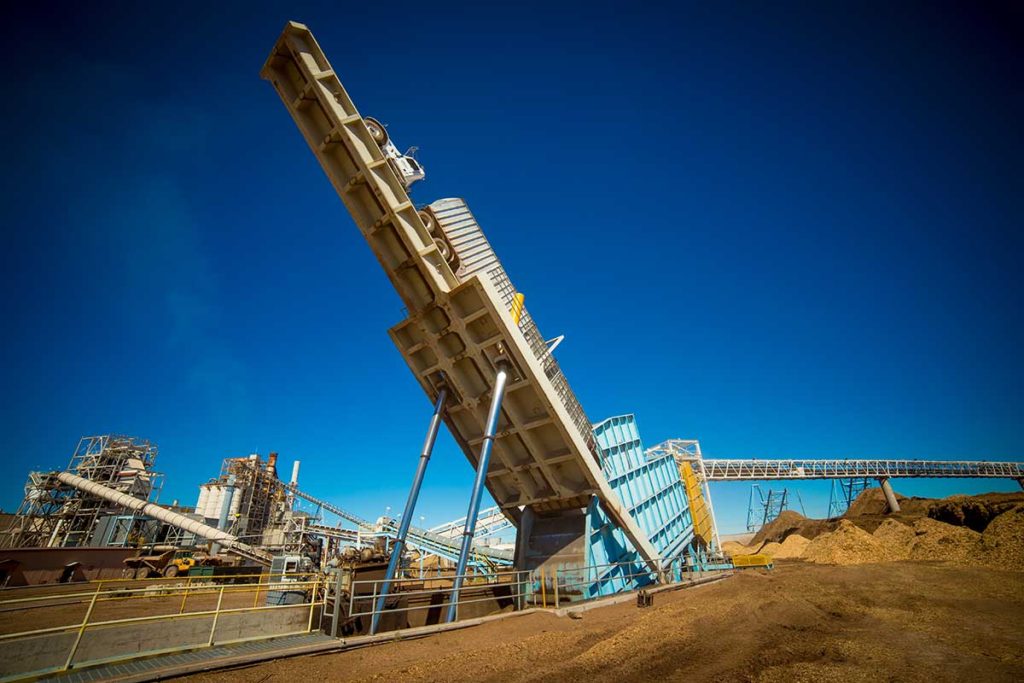FS Says Biomass Should Drive 4FRI
Following its cancellation of the Phase 2 Request for Proposal (RFP) and bid selection in September, which caught everybody by surprise, the Forest Service “has gone back to work” on how to move forward with stewardship and treatment of the 520,000 acres that was included in Phase 2, which was part of the 4 Forests Restoration Initiative (4FRI) seeking to improve forest health conditions on 2.4 million acres across four Arizona national forests while enhancing wood products manufacturing and biomass processing infrastructure.
The agency hosted an industry roundtable of 4FRI stakeholders on October 12 in Heber, Ariz. that addressed restoration strategies and “lessons learned.”
Biomass disposal and bioelectricity were emphasized at the meeting as the key components in any path moving forward. The stakeholders group opened the door to another large-scale proposal or a combination of new agreements and contracts. They also emphasized the importance of accelerating the pace and scale of restoration treatments, while supporting sustainable forest restoration industries.
“The bottom line is that bioelectricity was the solution for all known bidders in the RFP in relation to the disposal of the low value biomass,” comments Brad Worsley, president of Novo Power, a producer of biomass electricity in Snowflake, Ariz. “We believe and seem to have support for the fact that there is no reason to move forward with any future RFP or GNA Stewardship Agreement that does not first assure that current bioelectricity in the state has been given the needed PPA (Power Purchase Agreement) extensions.”
Novo Power has PPAs with Arizona Public Services (APS) and Salt River Project (SRP), Arizona’s two largest electric utilities.
The stakeholders group also re-emphasized the need to reduce financial costs and risks to industry, investors and the government in potential uncertain environments over 20 years. This had been cited as the main reason for the agency’s cancellation of the Phase 2 process.
RELATED ARTICLES:
Latest news
Valmet To Convert Coal-Fired Boiler In Finland To Pellet-Fired
Valmet will be converting Helen Ltd.’s coal-fired district heat boiler to bubbling fluidized bed (BFB) combustion to enable wood pellet firing at the Salmisaari ‘A’ power plant in Helsinki, Finland. The conversion promotes the company’s goal of phasing out coal, while at the same time strengthening the construction of a sustainable energy system…
Enviva Announces First Quarter Setback
Enviva, the world’s largest producer of industrial wood pellets, released its quarterly report in early May, and it rippled through the wood-to-energy ranks. “The plans and initiatives underway to improve productivity and costs across Enviva’s current asset platform continue to fall behind expectations,” commented John Keppler, Executive Chairman of the board…
Dieffenbacher Names New Energy Unit Director
Wolfgang Lashofer has been appointed as the new Managing Director of Dieffenbacher Energy GmbH, which was formed at the beginning of the year following the acquisition of BERTSCHenergy, based in Bludenz, Western Austria. As Managing Director of Dieffenbacher Energy, Lashofer takes over the management of the newly established Energy Business Unit…
Find Us On Social
Subscribe to Our Newsletter
Wood Bioenergy News Online hits the inboxes of subscribers in the wood-to-energy sectors.
Subscribe/Renew
Wood Bioenergy is published and delivered worldwide 6 times per year. Free to qualified readers in the U.S. Subscribers outside the U.S. are asked to pay a small fee.
Advertise
Complete the online form so we can direct you to the appropriate Sales Representative.

